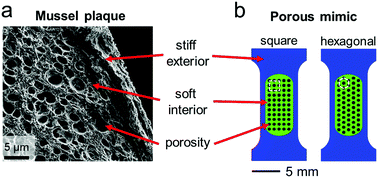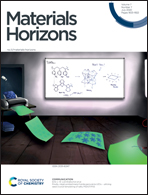Engineering crack tortuosity in printed polymer–polymer composites through ordered pores†
Abstract
Multimaterial additive manufacturing is an enabling tool for exploring difficult to access structure–property relationships. In this work, a recently developed multimaterial printing approach, solution mask liquid lithography, is used to produce porous polymer–polymer composites inspired by tough, hierarchical structures found in nature. The results demonstrate that varying the size and packing of pores in the core structure leads to significant enhancement in crack deflection. Finite element analysis reveals that this enhancement is linked to geometry-dependent stress distribution.



 Please wait while we load your content...
Please wait while we load your content...